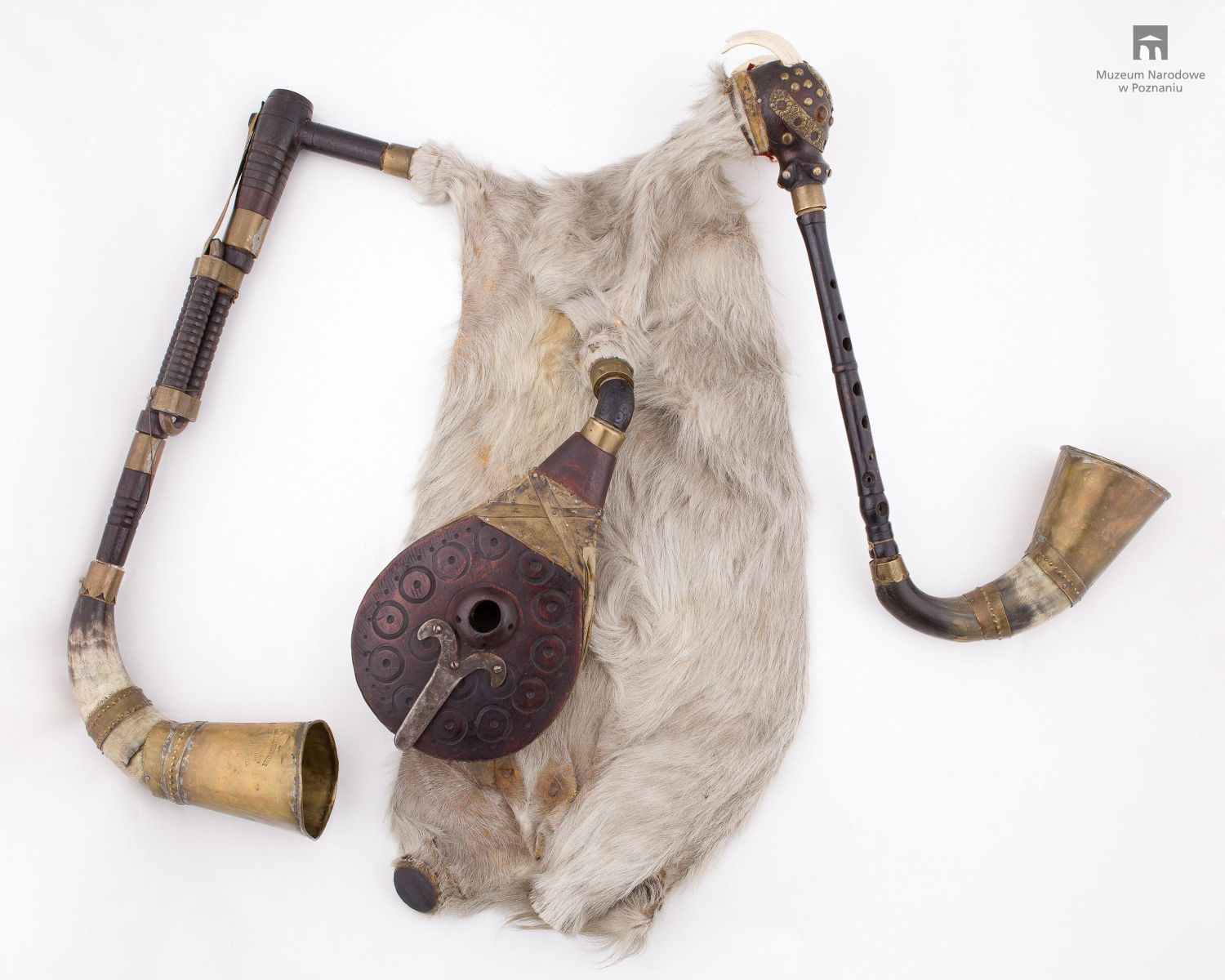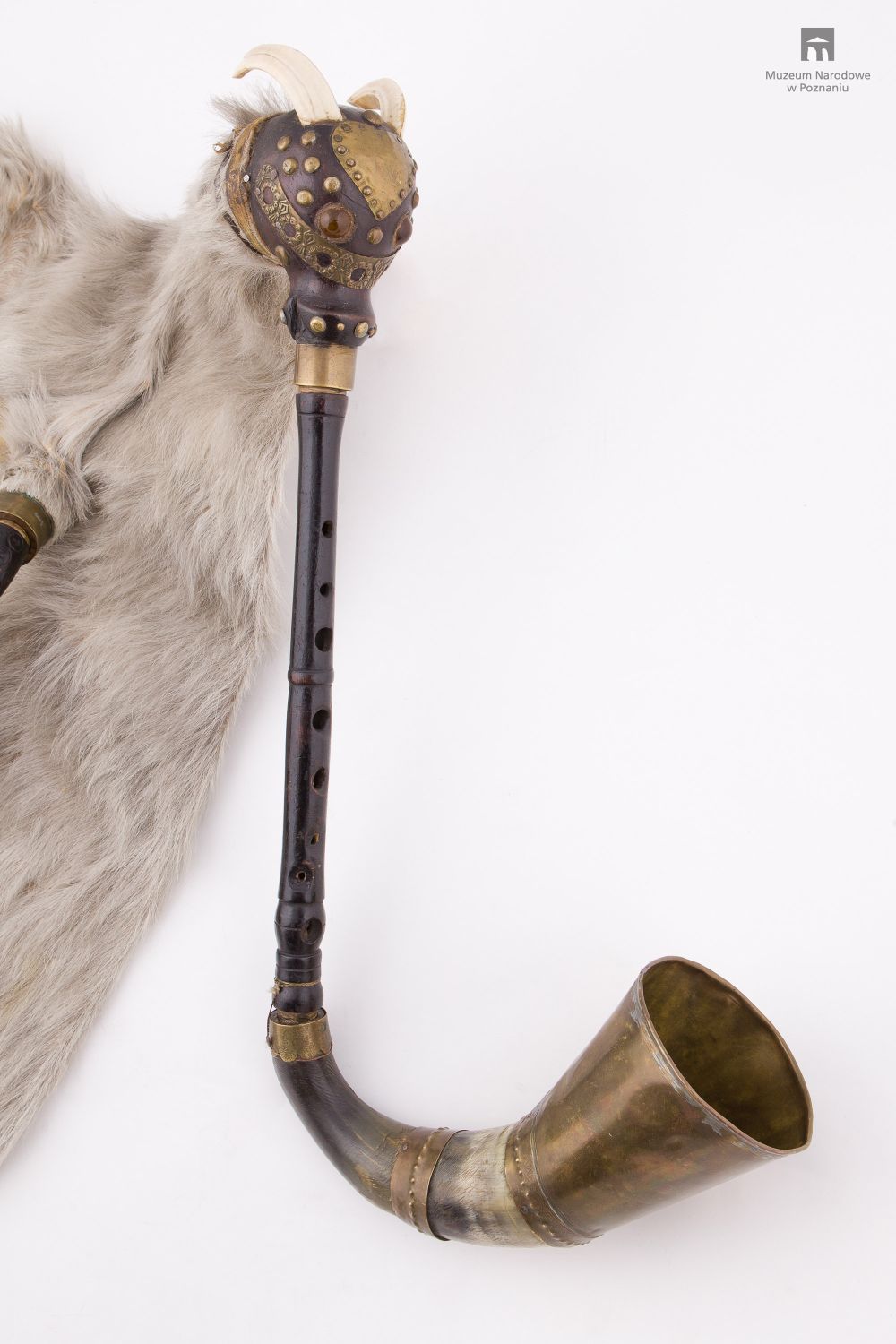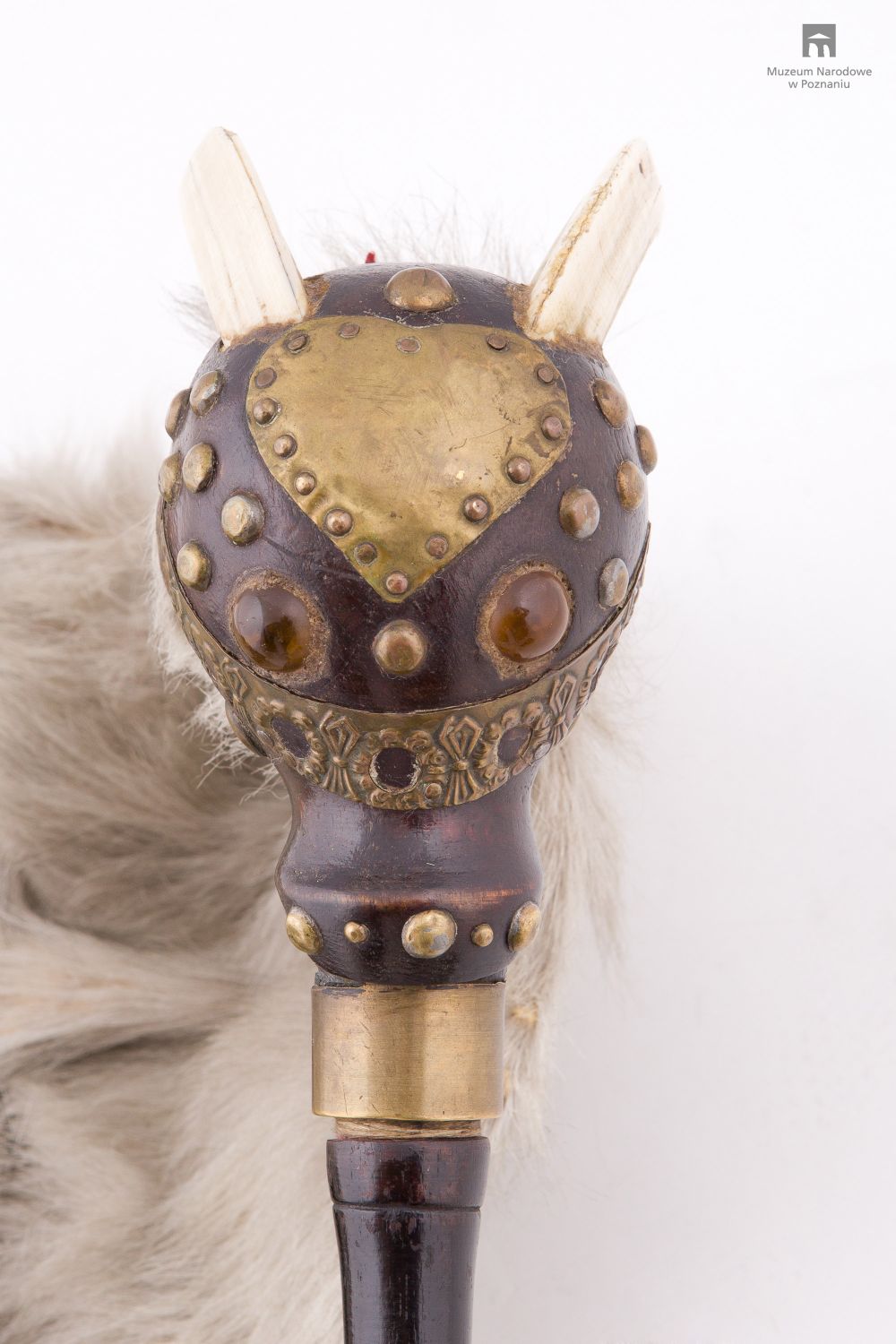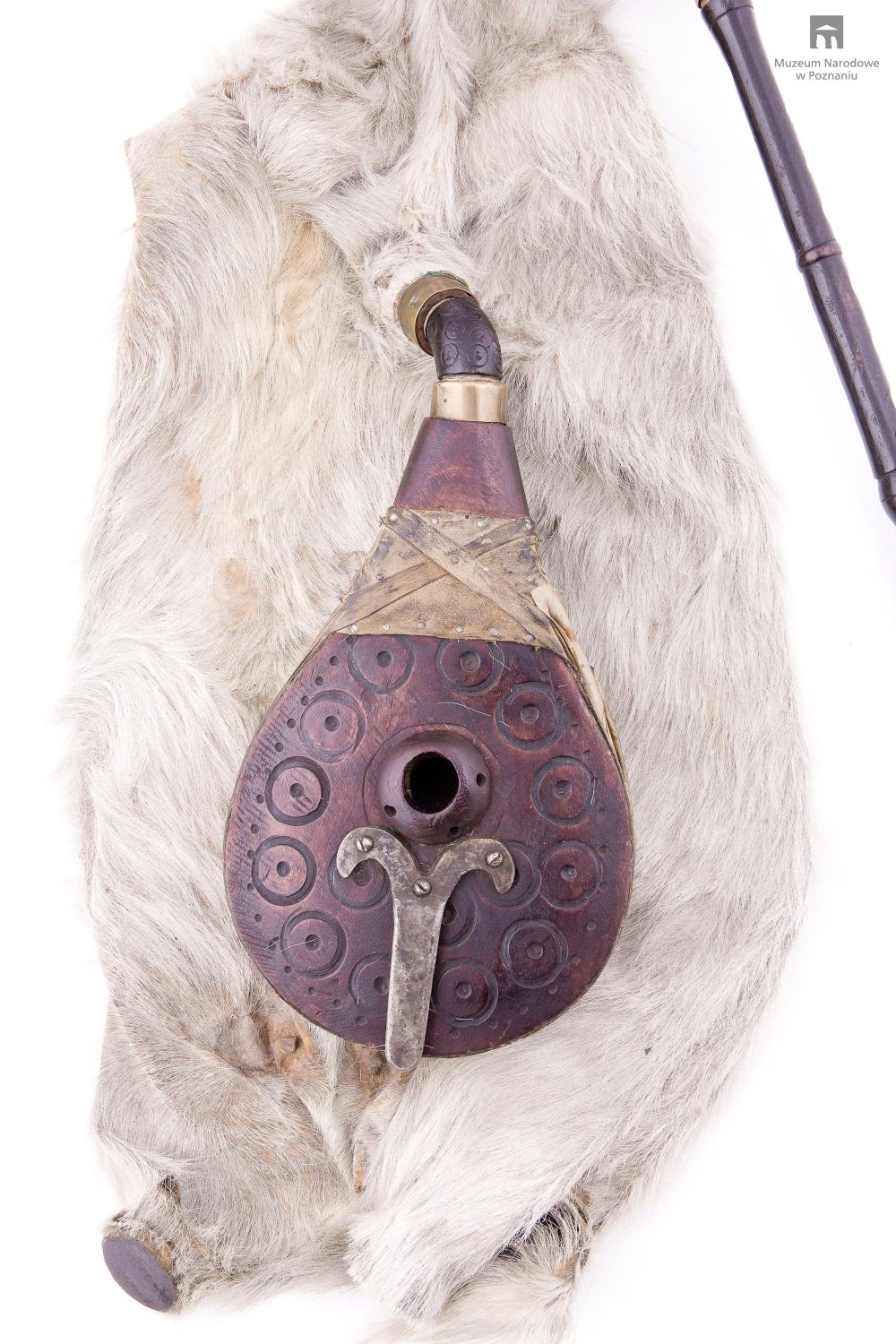bagpipe
bagpipe
Local name: kozioł weselny, kozioł biały (wedding reception goat, white goat)Classification: 4 Aerophones / 42 Wind instruments proper / 422 Reedpipes / 422.2 Reedpipes with single reeds (clarinets) / 422.21 Individual reedpipes with single reeds / 422.211 With cylindrical bore / 422.211.2 With fingerholes / 422.211.2 + 422.211-62 Single-reed chanter with cylindrical bore, with fingerholes + single-reed drone with cylindrical bore, flexible air reservoir for all pipes
Maker: Unknown
Date: first half of the 20th c.
Village / Town: Wolsztyn
Region: Greater Poland
Country: Poland
Owner: Ethnographic Museum, department of the National Museum in Poznań
Inventory number: MNP E 736
Description: an instrument with bellows; cylindrical pipes: a chanter (fingerholes 7+1 and the tuning hole) and a double bend drone, both ending in conical, arched horn-metal bells; bag made from a goat's whole skin with hair on the outside
Sound compass, tuning: E♭: b♭ – c' – d' – e♭' – f' – g' – a♭' – b♭' – c'' – d'' – e♭''
Performance practice: a bagpipe with 16th c. roots; the biggest of Polish bagpipes with the lowest tuning and an elegiac sound; traditional element of west Greater Poland folk bands (together with violins, an E-flat clarinet after World War I, and sometimes also a trumpet)
Catalog card by: Aneta Skibińska / Zbigniew J. Przerembski
Design (PDF)
white goat; rec. Museum of Sound
<< Back












